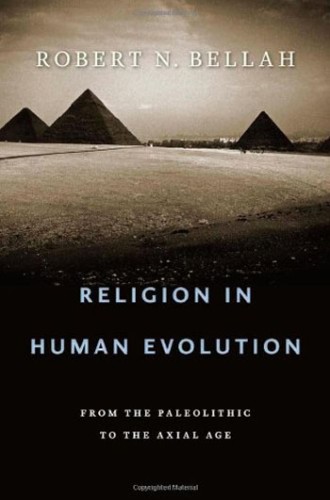Religion in Human Evolution, by Robert N. Bellah
Some two decades before Robert Bellah and his colleagues wrote the seminal 1985 book Habits of the Heart, which improved the public conversation about religion and society in the United States, Bellah penned a provocative essay called “Religious Evolution.” He has finally returned to that ambitious theme in his magnum opus, Religion in Human Evolution, the fruit of 12 years of research and writing and of a distinguished life as an internationally respected public philosopher and sociologist of religion.
Perhaps only Bellah, with his lifelong passion and depth of curiosity for this huge subject, could synthesize for us such a vast range of biological, anthropological and historical literature that together reveal the origins and cultural evolution of religion, as well as its ongoing potential to transform human beings and societies in both East and West. He shows us how the world’s great religions have long demonstrated a remarkable capacity to adapt and renew themselves, while simultaneously contributing to breakthroughs at critical moments in history that have made the moral advance of human civilization possible.
These successive leaps in human moral development were particularly profound during the Axial Age of 800–200 BCE—where this book ends and its unfinished sequel begins—when the four civilizations of ancient Israel, Greece, China and India separately produced towering spiritual leaders and sages who helped move their cultures and us closer to a universal ethic that is still emerging in our day.






